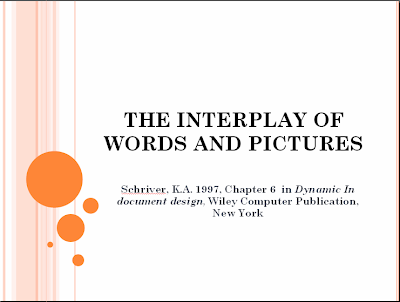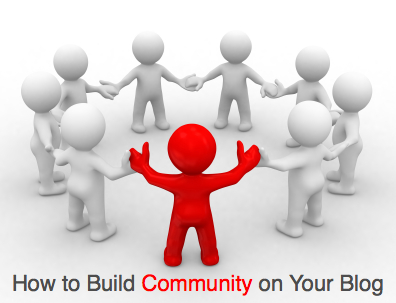Walsh (2006, p.26) says that, written text is only one part of the message and no longer the dominant part. This means, besides written text as a vital factor of good design, images is gaining importance over written text.
According to Schriver, the first principles need to consider before beginning a document is to identify the possible target audience for the text. Document design is meant to 'help people to achieve their specific goals for using texts at home, school or work ( Schriver, 1997). This means, as a document designers, they have to be responsible in order to ensure their readers keep reading until the end and will get proper and crystal clear of information or instructions.
In addition, document designers are advised to apply multiple of diversity of elements when producing a document. They have to know that not everything can be realized in language, but can also be realized by means of images (Kress & van Leeuwen, 2006,pg 19).
My group presentation's slides are applied the recommendations as suggested in the readings concerning a good document design. For instance, take a look at this slide:

Reep (2006) states that headings call the reader's attention to the specific topics, and divide the major points to achieve better understanding in one document.

Moreover, Reep also argues that the use of same kind of font and avoid using all capitals are elements of good design. Reep and Nielsen agree that listing out factors and sub-topics is to underline information and simplify the complex facts for the readers.
Nielsen (1997) says that bulleted lists and separate idea for each paragrapgh would help the readers along the reading journey. For instance, take a look at this slide,

References
Nielsen, J.1997, How Users Read on the Web, viewed 4 April 2010, www.useit.com/alertbox/9710a.html
Putnis, P,Petelin, R 1996, 'Writing to communicate' in Professional Communication: Principles and Applications, Prentice Hall, Sydney.
Reep, D.C 2006, 'Chp 4: Principles of Document Design', in Technical Writing,6th ed, PearsonEdu,Inc.,New York, p.173-190.
Schriver, K.A. 1997, Chapter 6: Dynamics in document design: creating texts for readers, Wiley Computer Pub., New York.
Walsh, M.2006, " 'Textual Shift': Examining the reading process with print, visual and multimodal texts", Australian Journal of Language and Literacy, vol.29, no.1, p.24-37.













